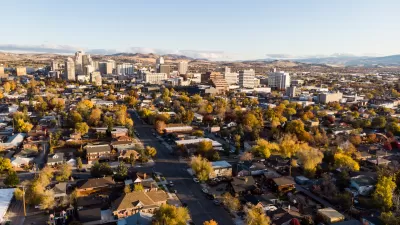Easing ADU regulations has led to some new construction in the Twin Cities, but the additional units have made a small dent in the area’s affordable housing problem.

Jessica Lee and Greta Kaul take a closer look at accessory dwelling units in the Twin Cities and find that the numbers are still low. "Since 2015 — the first year in which Minneapolis residents could apply for permits following a new ordinance by the City Council — construction peaked in 2017 with 38 new ADUs. In total, the city has permitted 137 ADUs. They are on about 0.2 percent of single-family lots." St. Paul allowed ADU construction starting in 2016, and four have been built there.
The challenges for interested homeowners in the Twin Cities are similar to ones found in other cities: high construction costs, confusing regulations and permitting processes, and difficulties obtaining loans. Both cities have taken steps to make the process easier. St. Paul, for example, now allows ADU construction throughout the city rather than just in a restricted area.
The role of ADUs in boosting available affordable housing in the Twin Cities remains to be seen, report Lee and Kaul:
In Portland there are ADUs on about 1.5 percent of single-family home lots, [Sarah] Berke said. In order to hit that benchmark Minneapolis would need about 1,200 ADUs, St. Paul would need 888, and the Twin Cities region would need about 11,000, according to a MinnPost analysis of MetCouncil data.
Still, local officials remain confident that ADU construction will pick up in the coming years with zoning reform and more calls for diversification of housing stock and increased density.
FULL STORY: Accessory dwelling units were supposed to help ease the Twin Cities’ housing crunch. How’s that working out?

Manufactured Crisis: Losing the Nation’s Largest Source of Unsubsidized Affordable Housing
Manufactured housing communities have long been an affordable housing option for millions of people living in the U.S., but that affordability is disappearing rapidly. How did we get here?

Americans May Be Stuck — But Why?
Americans are moving a lot less than they once did, and that is a problem. While Yoni Applebaum, in his highly-publicized article Stuck, gets the reasons badly wrong, it's still important to ask: why are we moving so much less than before?

Using Old Oil and Gas Wells for Green Energy Storage
Penn State researchers have found that repurposing abandoned oil and gas wells for geothermal-assisted compressed-air energy storage can boost efficiency, reduce environmental risks, and support clean energy and job transitions.

Updating LA’s Tree Rules Could Bring More Shade to Underserved Neighborhoods
A new USC study finds that relaxing Los Angeles’ outdated tree planting guidelines could significantly expand urban tree canopy and reduce shade disparities in lower-income neighborhoods, though infrastructure investments are also needed.

California's Canal Solar Projects Aim to Conserve Resources and Expand Clean Energy
California’s Project Nexus has begun generating electricity from solar panels installed over irrigation canals, with researchers and state agencies exploring statewide expansion to conserve water and boost clean energy production.

HHS Staff Cuts Gut Energy Assistance Program
The full staff of a federal program that distributes heating and cooling assistance for low-income families was laid off, jeopardizing the program’s operations.
Urban Design for Planners 1: Software Tools
This six-course series explores essential urban design concepts using open source software and equips planners with the tools they need to participate fully in the urban design process.
Planning for Universal Design
Learn the tools for implementing Universal Design in planning regulations.
Heyer Gruel & Associates PA
City of Moreno Valley
Institute for Housing and Urban Development Studies (IHS)
City of Grandview
Harvard GSD Executive Education
Salt Lake City
NYU Wagner Graduate School of Public Service
City of Cambridge, Maryland





























